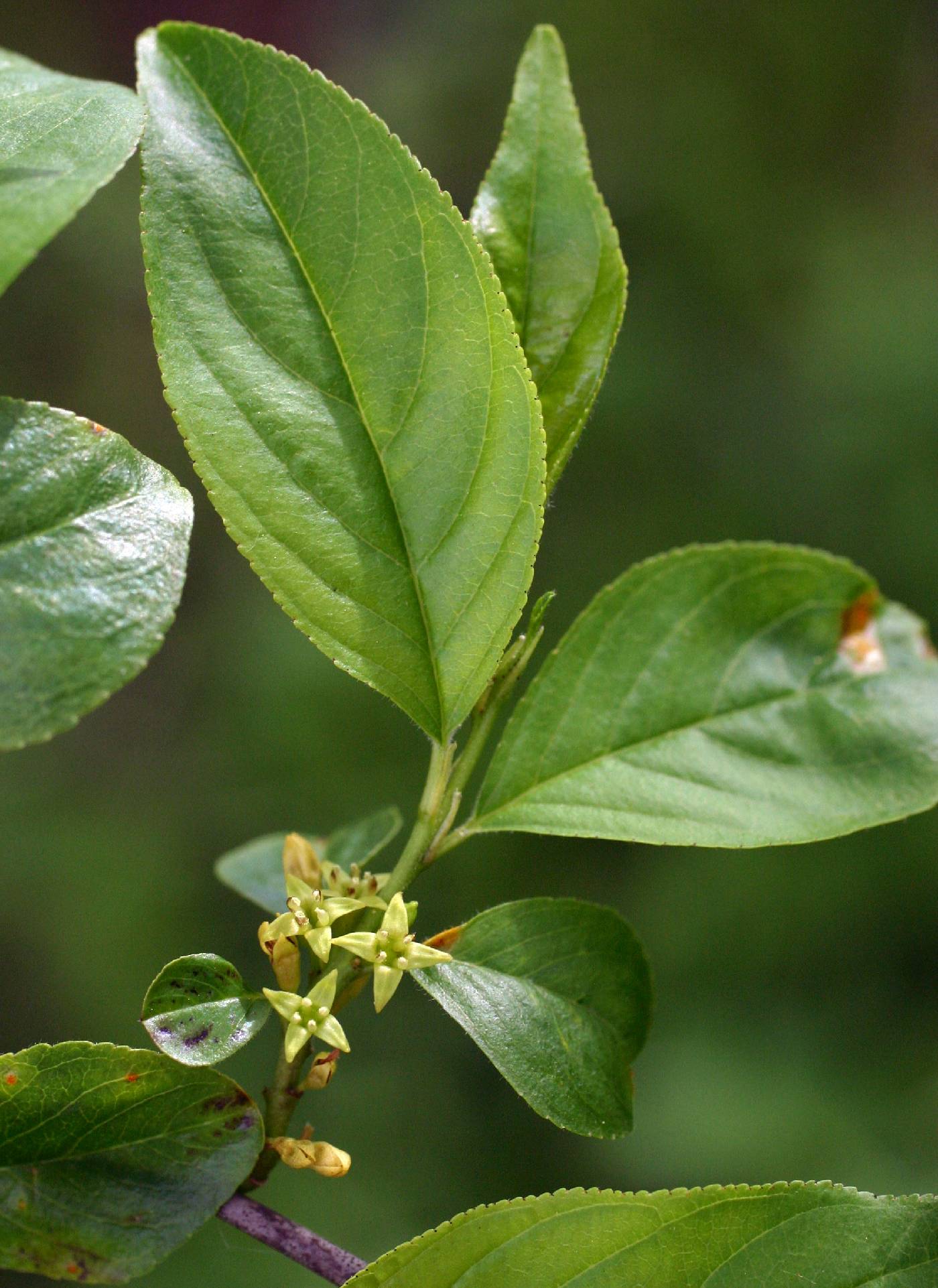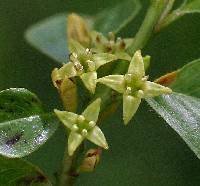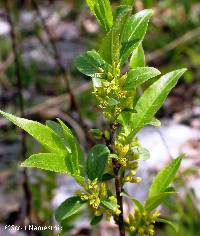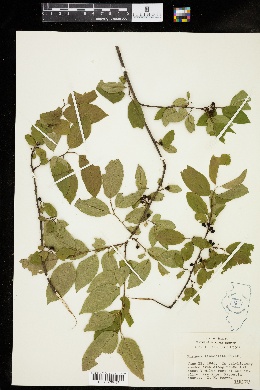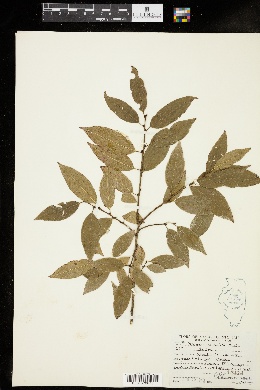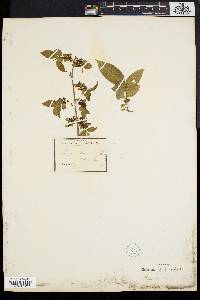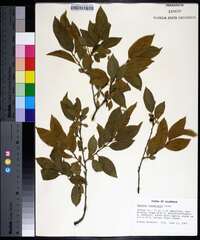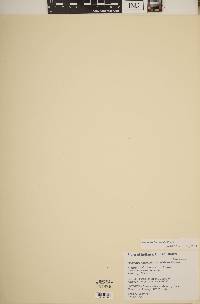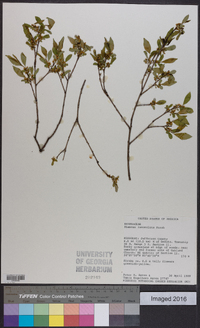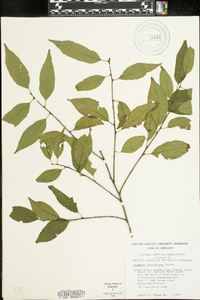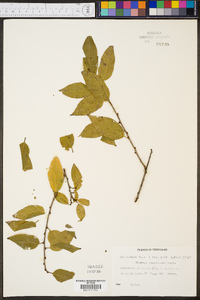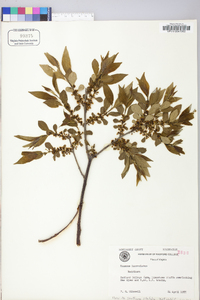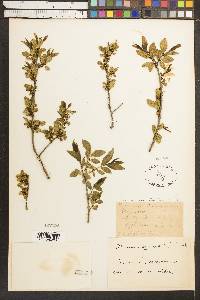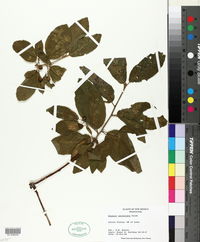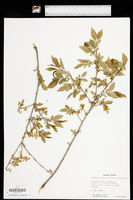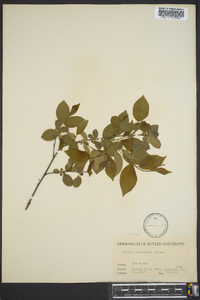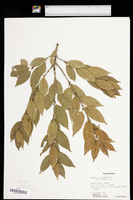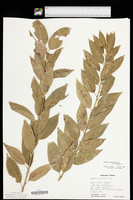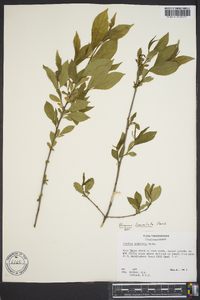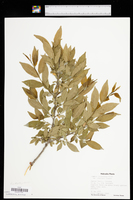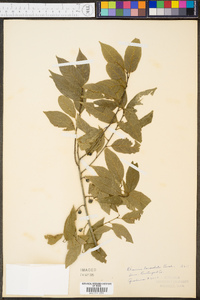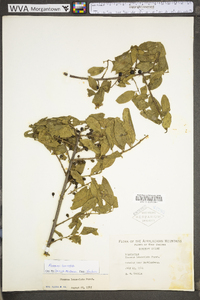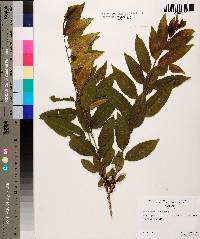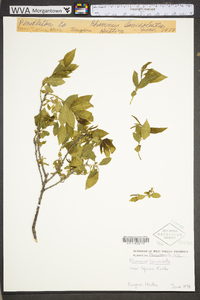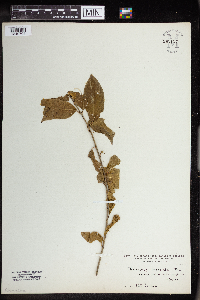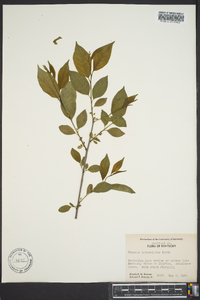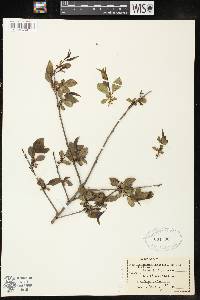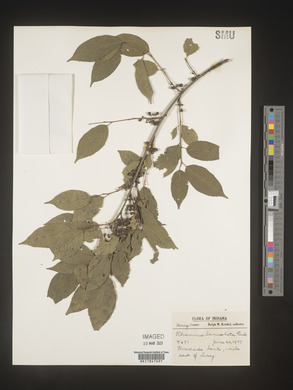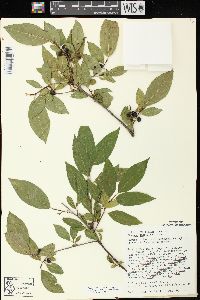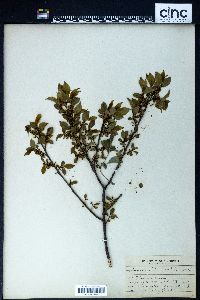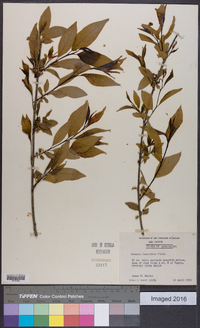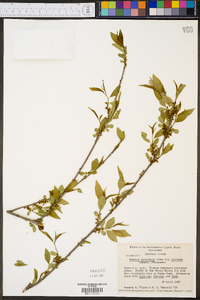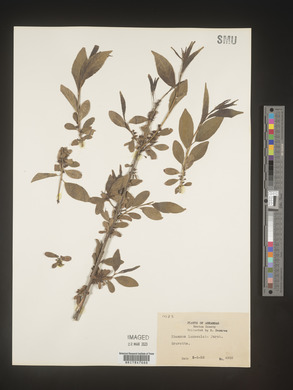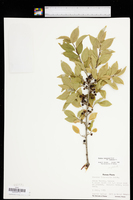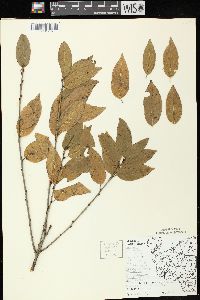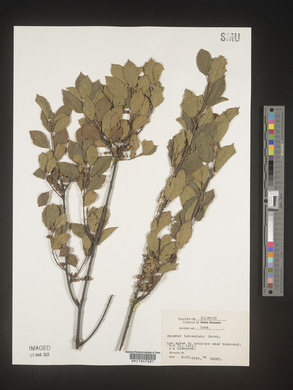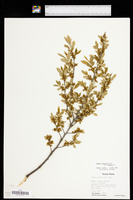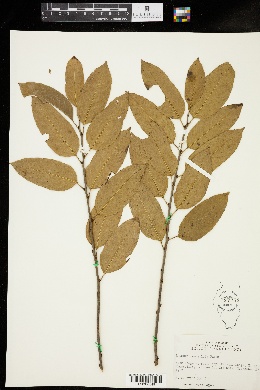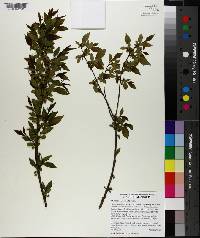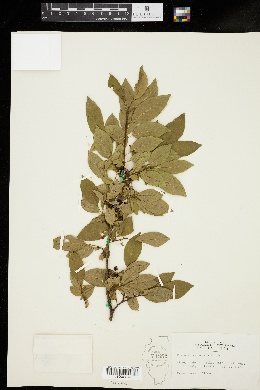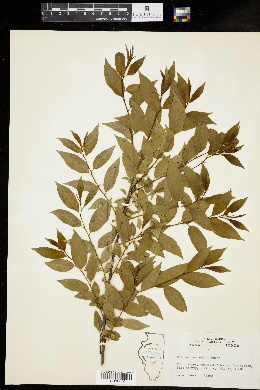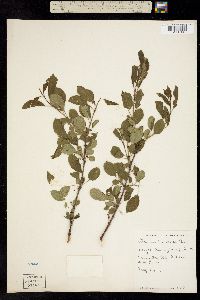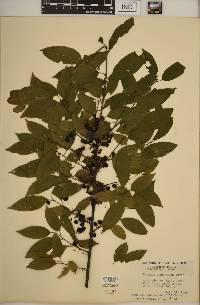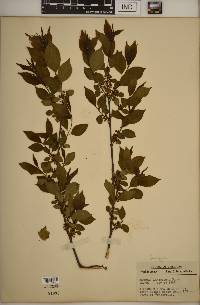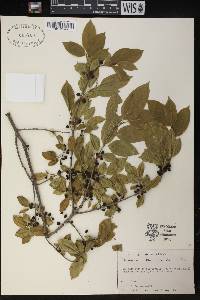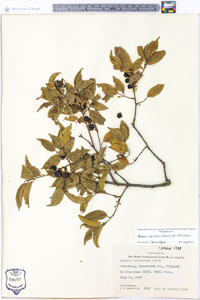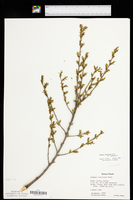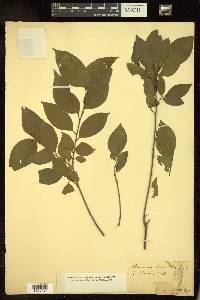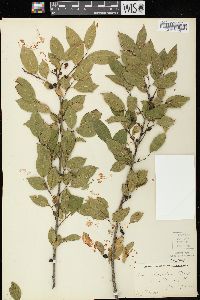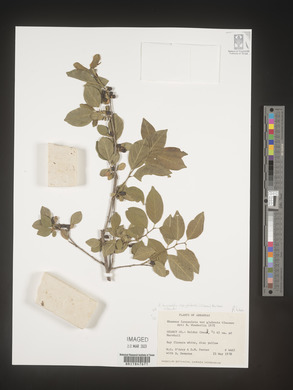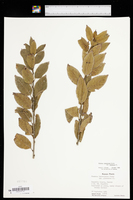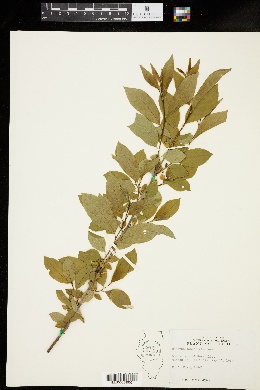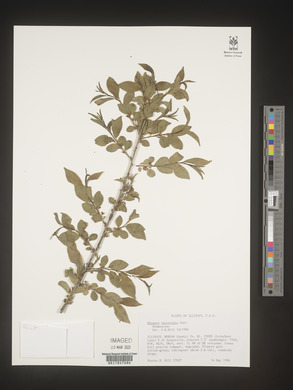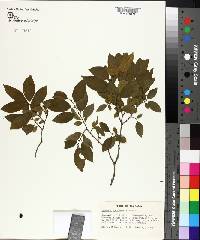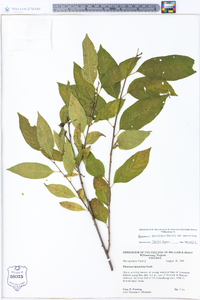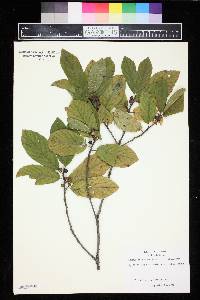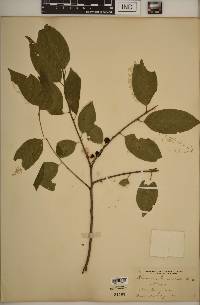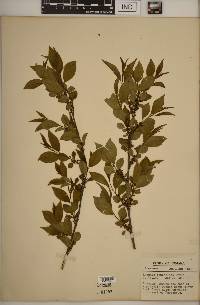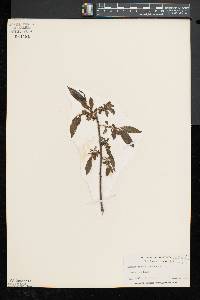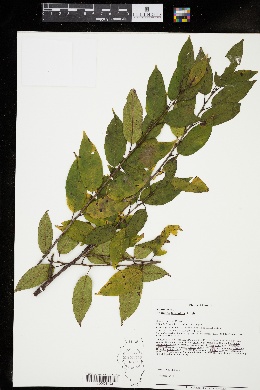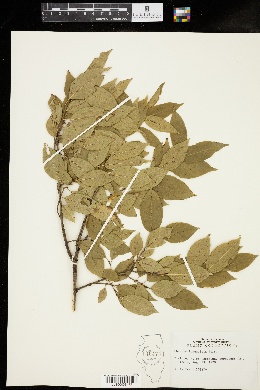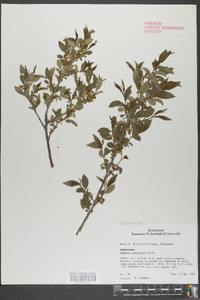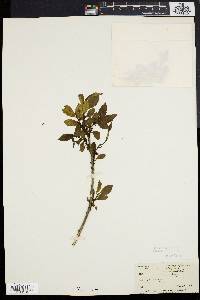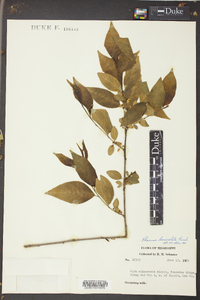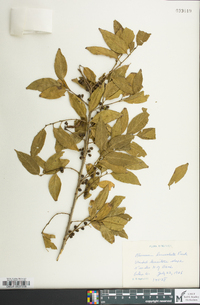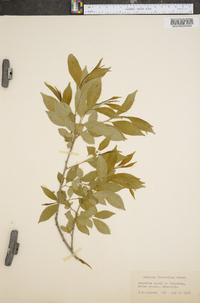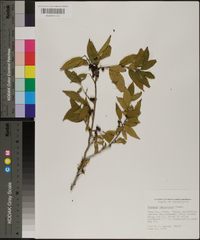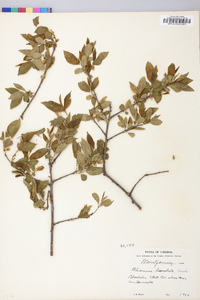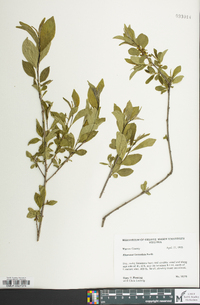Rhamnus lanceolata
|
|
|
|
Family: Rhamnaceae
Lance-Leaf Buckthorn, more...lanceleaf buckthorn
|
Shrub 1 - 2 m tall Leaves: alternate, stalked (4 - 10 mm), 3 - 8 cm long, 1.2 - 3.3 cm wide, lance-shaped to elliptic with a wedge-shaped to rounded base and short-pointed to blunt tip, finely toothed, hairy (sometimes just along veins) beneath, with four to ten vein pairs slightly curving toward the leaf tip. Flowers: solitary or in small clusters borne in leaf axils, greenish yellow, to 3 mm wide, four-petaled. Fruit: fleshy with two center seeds (drupe), black with a thin whitish coating, containing shiny light brown seeds 6 mm long and grooved along one side. Twigs: slender, reddish brown and hairy when young, becoming gray and smooth, sometimes peeling on older growth. Form: erect, widely branched, rarely forming thickets. Similar species: Rhamnus frangula, Rhamnus alnifolia, Rhamnus arguta var. velutina, and Rhamnus lanceolata all have alternate leaf arrangements and usually lack spines at the tips of the stems. Rhamnus frangula reaches 7 m tall, usually has non-toothed leaf margins, and has buds that lack scales (naked). Rhamnus alnifolia grows to 1 m tall, has oblong to elliptic or egg-shaped leaves with irregularly round-toothed margins, flowers lacking petals but having five sepals and stamens, and fruit usually containing three seeds. Rhamnus arguta var. velutina reaches 3 m tall and has broad oval to egg-shaped leaves with sharply awl-shaped teeth and a hairy lower surface. While the typical variety of R. lanceolata has hairy twigs and leaves, R. lanceolata var. glabrata lacks hairs. Flowering: late April to June Habitat and ecology: This species is one of rarest shrubs of the Chicago Region and grows in calcareous fens. Occurence in the Chicago region: native Notes: The fruit is eaten by birds, while deer eat the twigs in winter. Song- and game-birds use the low branches and numerous small branchlets of this species as protection. It is occasionally planted as an ornamental shrub. Etymology: Rhamnus is the ancient Greek name for buckthorn. Lanceolata means lance-shaped, referring to the leaves. Author: The Morton Arboretum Shrub 1-2 m; lvs alternate, lanceolate to elliptic, 3-8 cm at maturity, usually less than half as wide, short-acuminate, finely serrulate with incurved teeth, the somewhat upcurved lateral veins several (generally more than 4) on each side; petiole mostly 4-10 mm; fls appearing with the lvs, 4-merous, the staminate mostly 2-3 per axil, the pistillate mostly solitary; pet broadly obcordate, 1-1.2 mm in the staminate fls, 0.5-0.8 mm in the pistillate; styles 2, connate two- thirds their length; fr black; stones 2. Moist, especially calcareous soil. Var. lanceolata, with the lvs and young branches densely and softly pubescent at anthesis, the lvs permanently pubescent beneath, occurs in mt. woods from s. Pa. to Ala. Var. glabrata Gleason, with the lvs and young branches at anthesis nearly or quite glabrous, occurs from O. and Ky. to S.D., Kans., and Ark. Gleason, Henry A. & Cronquist, Arthur J. 1991. Manual of vascular plants of northeastern United States and adjacent Canada. lxxv + 910 pp. ©The New York Botanical Garden. All rights reserved. Used by permission. From Flora of Indiana (1940) by Charles C. Deam This species is very local and has two distinct habitats. One is on limestone cliffs and rocky or gravelly wooded slopes and the other is in springy places with skunk cabbage, and in alluvial soil along streams. …… Indiana Coefficient of Conservatism: C = 4 Wetland Indicator Status: FACW |

